Mastering the Timeless Art of Japanese Design, Indoors and Out
July 23, 2022
Sponsored Content
Text by Maria LaPiana
Imagine living in a home filled with peace and tranquility. In a place where you feel a sense of balance and a visceral connection to nature in every season. A place where the “in” and the “out” read as one.
That vibe is the essence of Japanese design—and the North Star that guides ZEN Associates, an interior and landscape design and build firm. “Although our work is contemporary, it is deeply influenced by the Japanese design aesthetic,” says principal Peter White. “We have a genuine understanding of the power of nature and embrace the use of asymmetry, naturalness, simplicity, and balance.”
The team at ZEN designs award-winning spaces that honor nature; they use words like “peaceful,” “poetic,” and “balanced” to describe their work, which is known for its authenticity and mindful take on Japanese design, taking cues, not cloning. Rina Okawa leads the firm’s interior design services and designs with the understanding that interior and exterior spaces can be intricately connected.
The first order of business when taking on a new project is to make sure the team at ZEN understands the opportunities and constraints of the site, and their client’s lifestyle, program, and source of joy. They then rely on key Japanese design principles to guide the design and create outcomes that will enhance their clients’ lives.
Nature Study
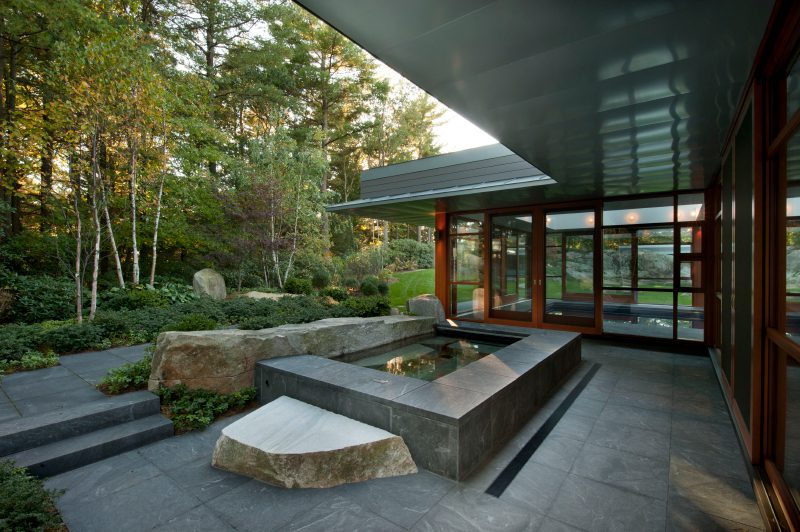
Photograph by Greg Shuppe
“We design spaces that are personal and memorable,” says White. The undercurrent beneath every project is always nature and the appreciation of nature. It’s manifested in the selection of materials, in scenes, sightlines, and even sounds. “It’s wonderful if you can open up a space and bring in sound,” says White. “Even a small water feature can add a soft, pleasing sound to the environment.”
In Balance

Photograph by Maxwell MacKenzie
Balance, scale, and proportion (and sometimes restraint) are essential elements in ZEN’s landscape and interior design plans. The firm is especially adept at creating a sense of informal balance with asymmetry and open space, establishing visual harmony, flow, and pause.
Wabi-Sabi

Photograph by Nat Rea
Wabi (rustic or aged beauty) and sabi (the art of imperfection) are so closely related and complementary that they are often referred to as wabi-sabi. It’s an aesthetic sensibility, a way of living that sees beauty in imperfections and serenely embraces the natural cycle of growth and decay. Wabi-sabi ensures that ZEN’s design, whether interior or exterior, will be timeless and endure along with their client’s lifestyle.
Framing the View
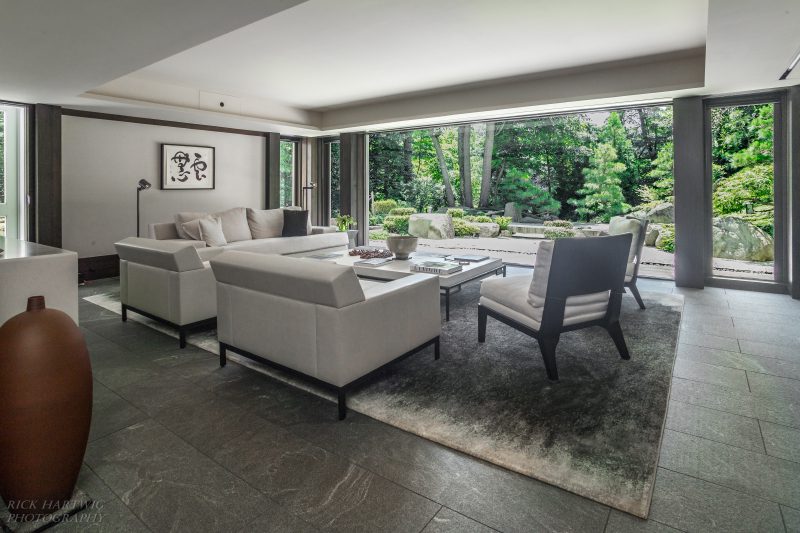
Photograph by Rick Hartwig
Though the Japanese garden may appear spontaneous, it is actually designed with purpose and intention. The ZEN team doesn’t try to bring in every part of the visible landscape. Views from inside the house should be carefully chosen and framed.
Consider the sun and shadows. In the Northeast, we’re keen on beaming natural light into our homes, so we love our south-facing windows. But there’s beauty in looking at a garden with the sun behind you, says White. “You’re seeing a garden bathed in light, and it creates a calm space for you to take in the view.” He suggests drawing attention to views at night. With so many types of lighting available today, there are “countless opportunities to create a beautifully lit landscape,” he says.
Inside Out

Photograph by Maxwell MacKenzie
In Japan, the home and garden are seamlessly integrated. The ZEN team is always looking for ways to move easily from inside the house to the patio, lawn, or garden, maximizing the space to transition to the outside. Advances in technology allow them to maximize the visual connection while maintaining climate control and comfort. By landscape and interior working together throughout the design process, the use of consistent materials is achieved.
Okawa believes in continuity. “The transition from inside to outside becomes seamless when the interior palette is consistent with the exterior in texture, color, pattern, and material,” she says. “We do like to incorporate natural woods and rough stone, things you would find in nature.”
In ZEN’s corner of the world, architectural styles vary, and some projects lend themselves to a design alliance better than others. At the end of the day, says White, “We know where we are. With every project, we’re applying our principles to American architecture and style. You can’t ignore the neighborhood. It just means we must pay attention to it. It doesn’t mean it won’t work. On the contrary, it can—and does—work very well.”
ZEN Associates, Inc.
Woburn, MA
781-932-3700
zenassociates.com
Share
![NEH-Logo_Black[1] NEH-Logo_Black[1]](https://b2915716.smushcdn.com/2915716/wp-content/uploads/2022/08/NEH-Logo_Black1-300x162.jpg?lossy=1&strip=1&webp=1)









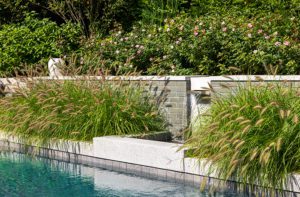
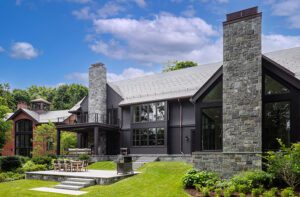
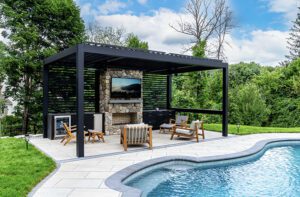

You must be logged in to post a comment.